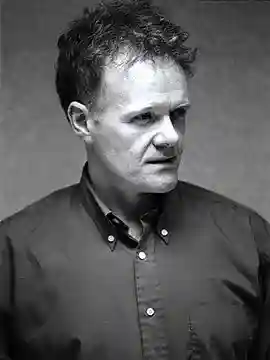One of my best friends is a film maker. We’ve skirted around the idea of me writing a script for him for a number of years now, but it never seems to happen. I remember one reason why he thought I wasn’t exactly suitable for a particular project: “You’ll start world-building.”
By which he meant that I’d be tempted to go big, add lots of detail, work out entire societies and subsystems and so on. Maybe it is a curse. But it’s also one of the main writing tasks of any science fiction author, whether they’re creating entire alien species and planets from scratch, or whether, like me, they’re just nudging the here and now in a strange direction: we all have to build a new world. Writers of novels set in reality (whatever that might be) have it easy in a way: there are a lot of givens that don’t need to be explained to the reader: how a chair works, or what happens what you turn a stove on. In the science fiction genre, none of those things can be taken for granted. In fact, new objects and ways of doing things are often vitally important to the working of the plot; they intersect and affect the characters for good and for ill. And so we need to spend sentences on them, whole pages sometimes. That’s a lot of description. And it needs to be handled with care, or else it becomes dull. With all that in mind, let’s start to build...
A Man of Shadows is set in city divided into three main areas, where time has become space: Day, Night and Dusk. In addition, the city is criss-crossed with thousands of different time lines. From this basic idea, the world grew: from large organisations (The Ariadne Centre, the Aeon Institute), to the names of precincts and streets (Burn Out, Bibleblack, Fade Away, Body Heat). From the type of drugs the kids are taking (kia), to the phrases people use (Lord Apollo!). Diseases, adverts, products, song titles, fashions, tribal groups, graffiti: they all add up by incremental degrees to bring the city alive. It’s all about layering, adding information piece by piece until the world starts to feel real: it has texture.
I actually enjoy this part of the writing; I find that objects and buildings appear as I need them. Very rarely is it planned in advance. And not everything needs to be described completely: it’s the telling detail that burns in the reader’s imagination, so I always try to pinpoint that one aspect of the invention that makes it stand out. Clocks and wristwatches feature a lot in A Man of Shadows, so I found myself working hard to come up with new ways of describing them, to make each timepiece fresh, to make them unique. It’s a job of work. And it’s fun. And even really complicated objects and processes can be revealed through the smallest attributes. I call this process marbling, feeding information throughout the whole narrative, beginning to end, so the reader learns about the world gradually. A little bit of poetic imagery goes a long way, as long as it rises naturally from the subject matter. And if all else fails, there’s always the dreaded “info dump”, most often seen at the beginning of Hollywood SF blockbusters. It should be used sparingly in the novel, I think, and as a last resort.
In a sense, every novel is concerned with world-building, even those works grounded in the everyday. Within the pages, everything is fictional. That faded, off-white lace antimacassar on the back of the old lady’s armchair? The writer has to place it there by hand. It’s just that science fiction takes the practice to extremes. And it’s easy to get bogged down in the world, in the details, to the detriment of characters and actions, so all the time I’m trying to remember the well-spring, the story itself. Who wants what? Why can’t they get it? Heroes and villains, friends and rivals, they all need a place to live in, a place to dream about, a place they desperately want to escape from. And all those places have to constructed, out of that most subtle and mysterious of all building materials: words.
Get A Man of Shadows at Bookshop or Amazon

About the author
Jeff Noon is an award-winning British cult novelist, short story writer and playwright. He won the Arthur C Clarke Award for Vurt, the John W Campbell award for Best New Writer, a Tinniswood Award for innovation in radio drama and the Mobil prize for playwriting.
He was trained in the visual arts, and was musically active on the punk scene before starting to write plays for the theatre. His work spans SF and fantasy genres, exploring the ever-changing borderzone between genre fiction and the avant-garde.







